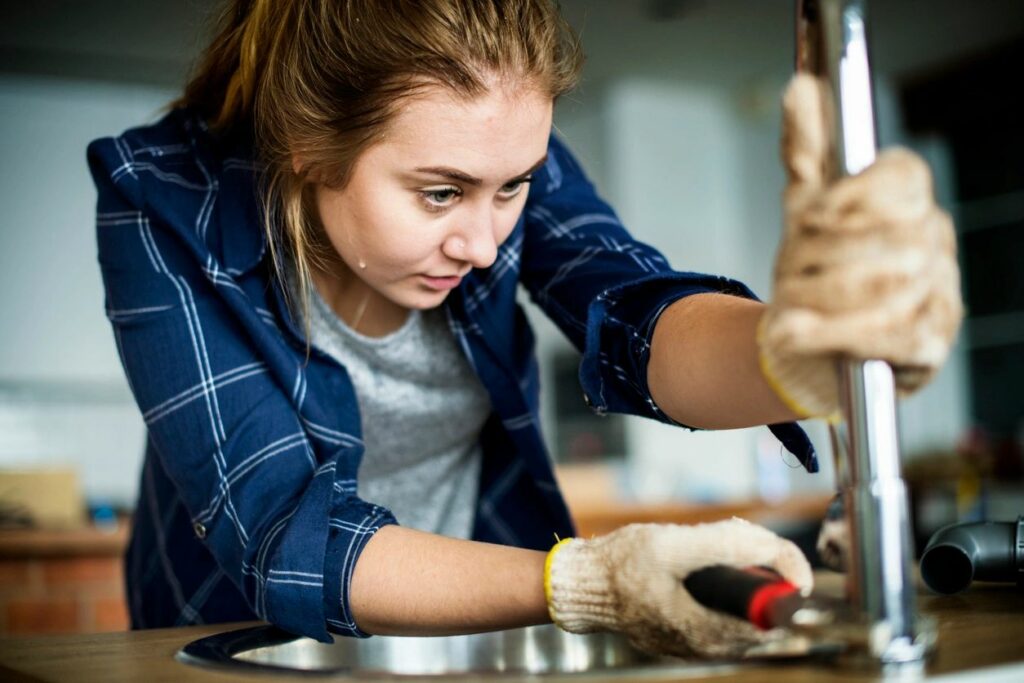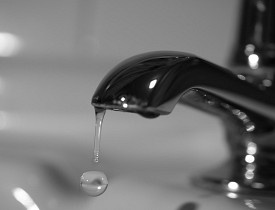What're your opinions regarding Why It's Important to Fix Leaky Faucets?

Trickling taps may feel like a minor hassle, however their impact exceeds just the aggravation of the sound. From drainage to sustaining unnecessary economic expenses and health dangers, disregarding a dripping tap can lead to different consequences. In this write-up, we'll look into why it's important to resolve this usual home issue immediately and efficiently.
Wastefulness of Water
Ecological Impact
Trickling faucets add significantly to water waste. According to the Epa (EPA), a single faucet trickling at one drip per second can squander greater than 3,000 gallons of water per year. This not only stress water resources but additionally affects ecological communities and wildlife based on them.
Financial Costs
Increased Water Costs
Beyond the ecological influence, dripping taps can blow up water costs considerably. The accumulated wastage over time translates right into greater energy costs, which could have been avoided with timely fixings.
Possible Residential Property Damage
Furthermore, extended trickling can bring about harm to fixtures and surfaces bordering the faucet. Water build-up can cause staining, corrosion, and even architectural problems if left ignored, resulting in added fixing expenses.
Health Concerns
Mold And Mildew and Mildew Development
The continuous presence of wetness from a dripping tap creates a perfect setting for mold and mildew development. These fungi not only endanger indoor air high quality yet likewise posture health dangers, specifically for people with respiratory system conditions or allergies.
Waterborne Illness
Stationary water in dripping faucets can end up being a breeding place for microorganisms and various other virus, increasing the danger of waterborne conditions. Impurities such as Legionella microorganisms grow in stationary water, possibly leading to serious illnesses when ingested or breathed in.
Do it yourself vs. Specialist Repair
Advantages and disadvantages of DIY Repair
While some might try to fix a dripping tap themselves, DIY repair work include their own set of challenges. Without correct understanding and tools, do it yourself efforts can intensify the issue or cause incomplete repairs, extending the problem.
Advantages of Employing a Professional Plumber
Employing a professional plumber makes sure that the underlying root cause of the leaking faucet is addressed effectively. Plumbings possess the knowledge and equipment to diagnose and fix tap problems efficiently, conserving time and decreasing the risk of more damage.
Step-by-Step Guide to Dealing With a Dripping Faucet
Tools Called for
Before trying to repair a trickling tap, collect the essential tools, including a flexible wrench, screwdrivers, substitute parts (such as washers or cartridges), and plumber's tape.
Typical Tap Issues and Their Solutions
Identify the sort of tap and the particular problem triggering the drip. Usual troubles include worn-out washers, rusty shutoff seats, or malfunctioning O-rings. Describe maker guidelines or on-line tutorials for detailed guidance on repairs.
Safety nets
Normal Upkeep Tips
To stop trickling faucets, execute regular maintenance such as cleaning aerators, examining for leaks, and changing worn-out components immediately. In addition, consider setting up water-saving gadgets or updating to more effective components.
Relevance of Prompt Repairs
Dealing with leaking taps as soon as they're observed stops further water wastage and potential damage, ultimately saving both water and cash in the future.
Influence On Residential Property Worth
Understanding of Well-Maintained Home
Maintaining a home in good condition, including resolving upkeep concerns like leaking taps, improves its perceived worth and value among prospective purchasers or occupants.
Impact on Resale Worth
Qualities with well-maintained plumbing components, consisting of faucets, command higher resale values in the realty market. Resolving trickling faucets can add to a favorable impression during property evaluations and settlements.
Ecological Obligation
Specific Payment to Preservation
Taking duty for dealing with trickling taps straightens with wider efforts toward water preservation and ecological sustainability. Every person's actions collectively make a considerable impact on maintaining valuable resources.
Sustainable Living Practices
By focusing on timely repair work and adopting water-saving behaviors, people add to sustainable living practices that profit both present and future generations.
Verdict
Attending to a leaking faucet exceeds plain comfort; it's a vital action toward preserving water, decreasing economic costs, and guarding wellness and residential property. Whether through DIY fixings or professional aid, taking action to take care of leaking taps is a tiny yet impactful way to promote accountable stewardship of sources and add to a much healthier, more sustainable future.
How to Fix a Leaky Faucet: Step-by-Step Repair Guide
A leaky faucet may seem like a simple annoyance, but if it's not fixed promptly, that leak could cost hundreds to potentially thousands. From water damage to mold, mildew, and high water bills, even a tiny leak can be catastrophic if left unattended. Damage like this can even affect the overall value of your home, so it's important to take the right approach for leaky faucet repair. You may need the help of a plumber in some cases, but we've got a few tips you can try on how to fix a leaky faucet before calling the pros.
Four Faucet Types
When you're learning how to fix a leaky faucet, the first step is knowing what kind of faucet you're working with! There are four common types.
Cartridge Faucets
Cartridge faucets come in one- or two-handled varieties. In one-handled cartridge faucets, hot and cold water combines in a single cartridge. In the two-handled versions, hot and cold water are controlled separately and mixed in the faucet.
Ball Faucets
Ball faucets have a single lever you push up and down to adjust the pressure and rotate to change the temperature. A slotted metal ball controls the amount of water allowed into the spout.
Compression Washer Faucets
They're the oldest type of faucet, but they're still used in many homes — especially older ones. Compression faucets have two separate handles that, when turned, raise or lower the washer that seals a water valve. This valve stops water from flowing through the faucet when it is turned off.
Disc Faucets
Disc faucets rarely need to be repaired due to their maintenance-free design. The water flow is controlled by two discs — the upper one raises and lowers against a fixed lower disc, creating a watertight seal. If your disc faucet starts leaking, you may need to replace the seals or clean residue buildup from the inlets.
Fixing a Leaky Faucet
Step 1: Turn Off the Water
Whether you're learning how to fix a leaky bathtub faucet or how to fix a leaky kitchen faucet, always turn off the water supply to your working area when you're fixing a leak. The last thing you want is a flood added to your list of things to fix.
Look for the shutoff valves below your sink or around the tub and turn them clockwise to stop the water flow. If your faucet doesn't have shutoff valves, you may need to turn off the water for the whole house. Check to make sure it's off by turning the faucet on. If nothing comes out, you're ready to start the repair.
Step 2: Take Apart the Faucet
How you disassemble your faucet depends on the type of fixture you have. You can use a flathead screwdriver to remove the caps on top of the handle or handles for cartridge and compression faucets. Inside, you should see handle screws. Unscrew these with a screwdriver to remove the handle.
Disc- and ball-style faucets will typically have an inlet screw near the handle, and removing that will reveal the interior of the faucet.
Detach the Valve Stem
For cartridge- and compression-style faucets, you'll see the inner valve stem or cartridge once you remove the faucet handles. If you have a compression faucet, unscrew the brass valve stem. If you have a cartridge faucet, pull out the cartridge. If your cartridge has been in place for a while, it may require some tools or extra force to remove it due to mineral deposits.
Examine and Replace Parts
Once you've removed the parts, check them out to confirm what needs to be replaced. You may see corroded rubber washers, O-rings, stems, or cartridges. On a ball-style faucet, check the seats and springs for damage.
If you need to repair a leaky disc faucet, check the inlet and seals on the lower disc.
Once you determine what parts must be replaced, visit your local hardware store. Bring the damaged parts with you to ensure you can purchase the correct components to replace them.
Clean Valves and Faucet Cavity
If you've removed a stem or cartridge, you may notice mineral buildup in the faucet's threads. Use white vinegar to clean the valve seat by soaking it for a few minutes, then scrub it away with a soft toothbrush and rinse with warm water. You can also clean the interior of the faucet in the same way.
Reassemble the Faucet
Once your faucet is cleaned and the required parts have been replaced, it's time to reassemble it. Put the pieces back together and slowly turn the water supply back on. Doing this slowly is crucial because too much initial water pressure can damage the new hardware you've just installed.
https://homewarranty.firstam.com/blog/how-to-fix-leaky-faucet

I discovered that piece on while doing a search on the internet. Do you know about somebody who is involved in the subject? Do not hesitate to share it. Thanks so much for your time invested reading it.